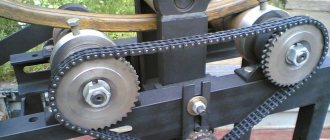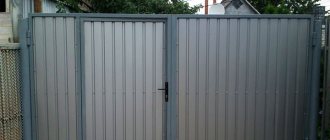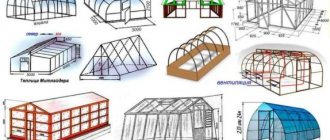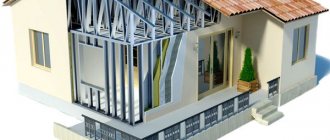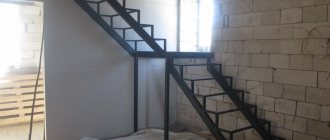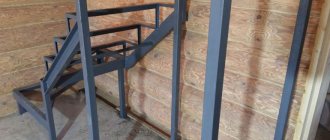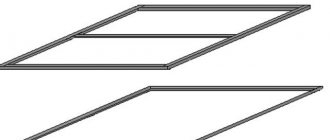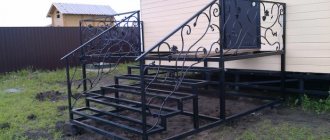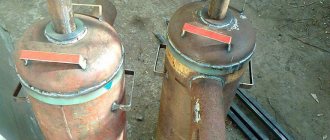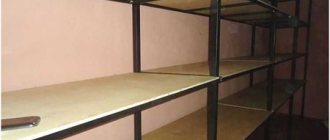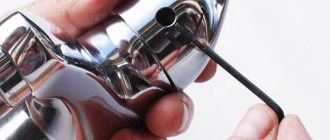When carrying out work in the house and in the country, we often need to bend pipes to give them the shape we need to perform our specific task. In order for the pipe to bend correctly and the pipe to serve for a long time, we will need a special machine, a pipe bender. These machines are sold in stores; there are many varieties and models, but our task will be to make a pipe bender with our own hands.
Pipe rolling machine
When rolling long pipes on a machine, the center of movement is shifted. Due to this displacement, a curve is formed between the rollers. One roller presses from the inside of the radial contour, and the other two form the external contour of the future product.
Drawing of a pipe bender for pulling profile pipes. All dimensions of parts required for manufacturing are indicated:
Structurally, such a device is made on a strong support made of channel. The lower rollers are located in bearings. Usually the distance between them does not change (there are versions of the machine where, by changing the location of the lower rollers, a different rolling radius is created).
The top roller is located on top. It can be moved in height. By moving the supporting part downward along the thread, significant forces can be developed. They will act on the pipe during the rolling process.
To perform rolling, additional pulling forces must be applied in the longitudinal direction. A handle is installed for this purpose. By rotating it, you can make the pipe move in one direction or another.
For self-production, you can go a different route. The walls of the device are cut out of a sheet 2...4 mm thick, where the rollers are installed.
Simplified pipe bender design:
The most difficult thing is to make the sidewalls, inside of which are located:
- Support shafts – 2 pcs.
- A pressure roller located on a suitable device.
- A handle that allows you to roll a profile pipe.
Industrial machines are made with manual or electric drive. When manufacturing an electrified machine, the possibility of reverse must be provided. Then you can roll, forcing the length to move in both directions.
Making a machine yourself
Depending on what materials are on hand for self-installation of a pipe bender, the type of device is selected. The easiest way is to make a rolling front device.
It consists of the following parts:
- Shafts, which can be made of metal, wood or polyurethane (the choice of material depends on the strength of the profile products that will need to be bent);
- Chain for driving the machine;
- Axis of rotation;
- Mechanism for moving shafts;
- Metal profile for the structure frame.
The principle of operation is that if you insert a pipe between the shafts of the device and turn the handle attached to one of them, the shafts will move and the pipe will take the required shape.
To make a pipe bender, you will need a drawing of it
In order to make the unit with your own hands, you need to prepare the following components:
- Metal profiles;
- Jack;
- Several durable springs;
- Three rollers;
- Pen;
- Drive chain.
Shafts connected by a chain allow tubular products to be bent. To make it convenient to operate the device, you need to additionally screw on a handle to control the rollers. Manufacturing is carried out according to a certain scheme.
The frame of the device is made, the metal profile for it is attached by welding or bolts, and a vertical support is made on the side and in the center. Rollers are installed: one is lower, and the other two are higher, the distance between them is selected based on the bend of the pipe that needs to be obtained. A chain is installed that will drive the mechanism; it can be removed from old equipment, for example, a motorcycle. The handle is welded to the movable roller to set the mechanism in motion. A jack is installed under part of the profile with a roller.
The pipe bender is ready. Now you can bend tubes on it, adjusting their bending radius during operation.
Types of devices with rotating rollers
Rolling of a profile pipe, which results in a change in its original configuration, can be performed on equipment of various designs. Such devices for rolling profile pipes can differ according to the type of drive used and the main technical characteristics. Thus, rolling rollers can have:
- manual drive (the use of such devices for rolling profile pipes requires significant physical effort);
- electric drive;
- hydraulic drive mechanism.
Manual rolling rollers serve as a prototype for self-manufacturing of the machine
The simplest (and, accordingly, inexpensive) devices used to roll a profile pipe are manual profile benders. Along with their reliability and ease of use, they are distinguished by a number of significant advantages. The design of a manual profile bender consists of the following elements:
- a massive frame that serves as a reliable foundation for the entire structure;
- rollers that perform feeding and receiving functions (these structural elements, with the help of which rolling is performed, are connected to each other via a chain transmission);
- a set of clamping mechanisms (clamps) designed for fixing pipes of various sizes.
Main parts of the rollers
This rolling machine, which has a simple design, is also equipped with a special pipe, which acts as a guide for the bent workpiece. It should be borne in mind that using such a machine requires the performer to exert significant physical effort. In addition, this device does not allow rolling with high productivity and is most often used for simple work at home. That is why the design diagram of this machine is used to make a profile bending machine with your own hands. Such a simple design profile bender allows you to perform rolling of profile pipes with high quality and high efficiency.
An electric machine for rolling profile pipes, even one made independently, provides higher productivity of the technological operation. This is explained by the fact that an electric drive, the power of which can be quite large, is responsible for performing the main operation - pulling the professional pipe through the rollers. That is why electric rollers for profile pipes, which you can make yourself using drawings, are used both by small organizations or home craftsmen, and by manufacturing enterprises.
The machine can be equipped with an electric drive later, the main thing is to take this into account initially and develop a sufficiently powerful design
However, of course, the hydraulic profile bending machine has the highest power, which is quite difficult to make with your own hands. Devices of this type, intended for rolling profile pipes, are used mainly in industrial enterprises, where it is necessary to carry out such a technological operation with high productivity.
Types of methods
A pipe bender for metal-plastic pipes is a basic machine that operates on one mechanics. The machine is indispensable for pipelines, including thick-walled and metal-plastic ones. It can work with different types of metal (steel, aluminum, copper, zinc and their alloys). For greater productivity, the bend areas can be pre-red to release the metal, relieve internal stress and make it softer.
Cold method
Common in garage craftsmanship. If you don’t have a blowtorch or burner, you can use it. The disadvantage is that it requires more effort. Cold metal is harder and can crack. Therefore only suitable for raw steel and soft non-ferrous metals. Safer compared to hot rolling, since you don’t have to work with high temperatures.
Hot method
Requires a torch and blowtorch. Heating relieves stress from the metal and therefore it becomes more pliable, but this is only relevant for thin-walled pipes. Thick-walled tubes cannot be heated to more than 300 degrees in a garage.
Types of rollers and operating features
The most popular are manually driven rollers. This universal device most often has a relatively light weight and compact dimensions. The master should have no questions about placing them in his home workshop.
Manual rollers
Manual rollers are used for bending various profile workpieces; they do not have an electric drive , and accordingly, they can work in almost any conditions. Typically, this hand-held device is made of a durable metal frame and feed rollers made in the shape of small cylinders.
The rollers are connected to each other by a chain transmission, which sets them in motion. In addition, there are small clamps on the rollers. In order for the rollers to produce the required profile deformation, they are additionally equipped with a special transfer tube.
To do the necessary work on this machine, the master needs to exert some physical effort, which is why they are not used in large enterprises. It is most convenient to work on rollers equipped with an electric drive. The metal pipe to be bent is pulled through the work area using a powerful electric motor. In appearance, the machines are vaguely similar to manual models, the only difference is that an electric motor is installed . As a rule, electric rollers are used in industrial production.
Hydraulic rollers
The next type of pipe bending roller, which is installed in production plants, is equipped with a special hydraulic drive. These machines are quite large in size and have sufficient power, which makes it possible to work with almost any type of metal. Hydraulic rollers perform a large amount of work in a fairly short time.
Types of machines
According to operating requirements, a distinction is made between fixed (stationary) and manual machines. Stationary structures are used to a greater extent in factories. A hand-made device made with your own hands is more suitable for performing work in a domestic environment.
Depending on the drive, there are several types of pipe bending devices:
- Hydraulic (a hydraulic jack is used). They are stationary and manual. Bends pipes up to 3 inches in diameter. Such machines are used in special industries and can carry out an impressive amount of work.
- Mechanical. The pressure is generated manually using the main screw or lever.
- Electrical. Bending occurs due to an electric motor), suitable for bending any pipes - both thin and thick walls. Thanks to electronics, precise calculations of the bend angle are made. Such pipes have no deformations.
- Electrohydraulic. The hydraulic cylinder is powered by an electric motor.
It is possible to bend a pipe in different ways.
In this regard, pipe benders are divided into:
- Segmental. They are equipped with a special device that simultaneously pulls and bends the workpiece at the desired angle around the segment.
- Crossbow type machine. It is equipped with a special mechanism consisting of a bending component.
- Spring devices. Supplied with springs. On such machines it is possible to process metal-plastic parts.
- Turf. It consists of a guide, which is placed inside the pipe before starting work. Such an element with a mandrel protects the part from deformation and flattening. This machine is used in the production of automobile pipes and for bending aluminum pipes.
- Lint-free. Bending is accomplished by winding the part onto a bending roller.
Depending on the length of the workpiece that needs to be bent, two types of devices are used:
- lever machines;
- rental devices.
Lever type devices are considered the most common in use. Turf and crossbow pipe benders are also commercially available. The operating principle of such machines consists of two guide rollers and a pressure template (mandrel). This mechanism makes it possible to cold process round metal pipes in small areas. Due to its small size, the crossbow pipe bender is considered a more common device among professional installers of technical communications. The device got its name due to the fact that the design is similar to a crossbow.
To produce a significant number of monotype parts with a small bending radius, it is possible to use a snail pipe bender. This device consists of two pulleys (wheels) of different diameters, fixed on shafts. Having secured one end of the pipe to the wheel, apply pressure to the workpiece with a roller of the smallest diameter (the main wheel), while at the same time rolling the roller over the area of the part being processed. Because of this, the pipe bends along the surface of the large pulley, taking on its shape. The only disadvantage of this method is the impossibility of extracting curves of a larger radius.
Do-it-yourself rolling (bending) machines, in which it is possible to adjust the angle of deformation of a metal pipe, are considered practical and universal in operation. The simplest system of a rolling machine consists of a base and a drive shaft fixed on it, located at a certain distance from each other. The pressure on the pipe is exerted by a movable roller, and it is pulled through the rotation of the main shafts. When creating small radius bends, you will need to make 50-100 runs. To avoid deformation, the product should be rolled at the same speed. It will be difficult to assemble the rolling mechanism yourself at home, since turning and welding work will be required.
Pipe bender and its varieties
Devices for bending pipes are classified according to the following parameters:
- If possible, move. There are stationary and portable mechanisms.
- By type of drive: manual, hydraulic, electrohydraulic, electric.
- By bending method: rolling, winding, rod (crossbow), rolling.
Let's take a closer look at the methods of influence .
- Run-in . With this method of work, one end of the pipe is fixed, and a stationary template is used to give the required shape. Pressure rollers are used to roll around the template.
- Winding . In this case, the workpiece is pressed against a movable roller on which winding occurs. The pipe is pulled between the roller and the stop installed at the beginning of the bending point.
- Crossbow method . In a crossbow device, the pipes are fixed on two fixed rollers, and bending is performed with a template on a movable rod. The template presses on the middle part of the fixed pipe section, giving the desired angle. In the crossbow method, the pressure is concentrated in the upper part, which leads to serious stretching of the pipe along the outer part of the bend, so it is not recommended to use it for thin-walled workpieces.
- Rolling (rolling) . In this method, a special device is used, which is based on two fixed support rollers and a movable central roller. It is the movable roller that influences the pipe being bent, and the bending angle depends on its position. This type of pipe bender is the most universal; in all others, the bending radius depends on the template used.
How to make a pipe bender from a jack
Making a pipe bender from a jack is not easy, but it is possible. The power capabilities of the resulting device are enormous. First, a strong frame is welded. To create a multi-functional tool, you can use a hydraulic press and a pipe bender at the same time.
For the manufacture of the structure, it is allowed to use any jack (5-12 tons). You should try to make one common tool so as not to disassemble it for transportation in the trunk of a car.
Such large loads require reliable fixation of the hydraulics to the frame to prevent disassembly of the mount each time after completion of work.
A suitable jack can be found at a car depot that has been closed for a long time, or at a car wrecker.
The punch is made from an old pulley or a thick pipe, bent with your own hands. The number of such parts is not limited in any way. It all depends on the diameter of the workpieces that will be processed.
An axle is attached to each edge of the frame, on which the rollers are mounted. The pipe blank rests on them. The jack presses on the punch, which is aimed at the center of the part. As a result, the cylindrical product begins to bend smoothly.
Features of rolling at Novomoskovsk ZMK
Novomoskovsk ZMK has experienced personnel who regularly improve their qualifications, and the necessary technical equipment that meets strict European standards.
Thanks to modern technological processes and the work of experienced craftsmen, every type of work related to bending pipes from any plastic materials is carried out quickly and efficiently. Any technological operation is carried out in full compliance with all the requirements stipulated for a specific type of technological process, with the obligatory passage of the preparatory stage.
Homemade devices for rolling pipes
It is practically impossible to do without such a device as a device for rolling corrugated pipes in those situations when you decide to do your own repairs, during which you will have to deal with bent pipes. To do this, you can purchase a serial device for this purpose or use a homemade profile bender, the design of which is not very complex. It also makes sense to ask the question of how to make a profile bender for the reason that serial models are quite expensive, so purchasing them (especially if they are required only for home repairs) is not always advisable.
Approximate dimensions of homemade rollers
In order to make high-quality homemade rollers, you can study theoretical information, watch a video on this topic, but the main thing is to follow the recommendations of those who have already achieved good results in solving this issue. Of course, to make your own roller, you need to have not only the appropriate knowledge, but also certain skills in the manufacture and use of various technical devices.
Kinematic diagram of the machine
Homemade rollers can even be made from scrap materials, which are almost always available in any garage or home workshop. Moreover, the efficiency of such rollers, if they are made taking into account all the recommendations, will not be much lower than that of commercially produced models.
Machine shaft drawings:
Methods for rolling profile pipes
You can deform the corrugated pipe relatively carefully in several ways:
- With preheating. The method is used for molding products with a width of more than 4 cm. Clean sand is poured into the pipe section, and the ends are closed with plugs with small holes for gases to escape. Then fix the workpiece and template in a vice and heat the bending area to 150 degrees, that is, until redness appears. The metal becomes plastic and can be deformed, while the sand helps to evenly distribute the heat and deforming force. It is necessary to heat and bend a section of pipe in one go, since repeated temperature and mechanical effects will lead to a decrease in the strength of the product.
Note! It is necessary to use protective fire-resistant clothing and thick heat-resistant gloves. Before starting work, you should prepare fire extinguishing means: a bucket of water or sand or a fire extinguisher.
- Cold method using a spring pipe bender. A spring with hooks at the ends is used as a shock-absorbing device for corrugated pipes with a width of less than 4 cm. The length of the auxiliary device must be sufficient to place it in the pipe along the entire bending section, and the cross-section must be such that the spring can be pulled effortlessly through the corrugated pipe, almost touching the walls. The workpiece with the spring fixed in it is fixed in a vice along with the template and slowly and smoothly bent.
- Cold method using a profile bending or rolling machine. The working part of the device consists of three parallel cylindrical rollers, the middle of which is located above the outer ones. The pipe is passed between rotating cylinders, while the workpiece rests on the lower ones, and the upper one presses it down, causing it to deform. To obtain a bend of the required radius, the pipe profile is rolled several times - during gradual deformation, the impact force is evenly distributed and there are no folds on the inner side of the arc or uneven stretching on the outer side.
We recommend that you read: How to install a water tank on a stove pipe in a bathhouse yourself
The first two methods are suitable for rolling pipes manually in cases where the production of a large number of bent parts is not required. To give the profiled product the desired shape, you will have to practice. Without experience in carrying out such manipulations, it is difficult to achieve the desired result.
The third method does not require special skills, allows you to produce a large number of arcs, waves and spirals and is highly accurate, but such pipe rolling requires a machine.
Manufacturing a machine for bending profile metal pipes
The user divided the work of constructing a homemade product into a number of sequential steps:
- I estimated the dimensions of the profile bender.
- I took the screw part from a car jack to make a pressure screw.
- I tried on the details.
- I assembled the body of a bending machine from a channel.
- Made the videos. The Pin008 axis was made from an M20 threaded rod. To do this, he cut it with a grinder into pieces of the required length.
The rollers were made from a set of nuts, bearings and washers.
- Stages of manufacturing a pressure roller.
- Assembling the profile bending frame. The top bar is removable for easy installation of the pressure roller.
The photo below clearly shows how to make a pressure roller for a profile bender.
Next, Pin008 made the locknuts. He did it like this:
- I screwed the nut onto the stud and secured it with a second nut.
- I clamped the workpiece with a clamp, and sawed the nut with a grinder with a thin cutting disc.
Assembled structure.
The sprockets for the Pin008 chain drive were secured to the nuts by welding.
Next, Pin008 assembled the profile bender. I painted it and used it for its intended purpose.
Ready design.
Because Pin008 didn’t make homemade drawings, so to clarify the dimensions of the machine, he attached a tape measure to the profile bender.
Height of the profile bender.
Pin008FORUMHOUSE Member
I think it’s not worth taking a smaller channel. The weight of the bed will decrease and the machine will stand unstable. The distance between the roller axes should not be less than 300 mm either. Otherwise, the load on the rollers and bearings will increase and their cages will burst. I note that the movement of the clamping screw is so light that it can be turned with one finger.
When making a homemade profile bender, remember that the smaller the axial distance between the rollers, the smaller the radius of the workpiece that is bent on the machine. But the load on the rollers will increase, and hence the bearings. The bend radius is regulated by the amount of lowering of the pressure roller, and it is limited by the height of the central part of the frame and the length of the threaded part of the pressure screw.
Roller systems
This modified device can be equipped with pressure wheels made of metal or polyurethane. When working with soft materials, it is possible to use wooden parts.
The distance between the rollers affects the performance of the system. With a large gap during bending, the pressure on the part decreases. The disadvantages of this design include the formation of a minimum radius, so a certain part of the product cannot be bent.
Homemade rollers are replaced with ball bearings. Moreover, the clamping element must be jammed so that the assembly unit does not begin to scroll.
In order for a homemade pipe bender to be used to give a specific shape to a profile structure, it needs to be modernized. When developing drawings, it is necessary to provide for the installation of side rollers in various positions. Metal strips need to be fixed on both sides. Their main function will be to hold the workpiece perpendicular to the roller axes.
The wheels are secured with a special screw. By smoothly tightening the roller system, the bent pipe passes through the fixture. After turning the latch by a certain degree, the cylindrical product is run.
Types of pipe benders
Pipe benders are divided into radius type and crossbow type
In radius pipes, they bend around a standard segment and therefore they have increased bending accuracy and are widely used in industry;
In crossbow profiles and pipes, they are bent between two 2 posts using a special shoe.
Manufacturing a pipe jack bender
A pipe jack bender is the most basic tool for deforming metal profiles and pipes, which you can build yourself.
To make it you will need the following products:
- car jack;
- two channels 100 mm wide and 60 cm long;
- four corners with sides 50 mm and length 40 cm;
- base-bed;
- two hourglass-shaped rollers with through central holes;
- 2 bolts for fastening the rollers;
- semicircular attachment for a jack with an internal recess.
If the procurement of raw materials and the assembly process seem to you to be unnecessarily labor-intensive, then it is better to purchase a hydraulic pipe bender ready-made. Our recommended article will introduce you to the rules for choosing equipment.
To make a pipe jack bender you need:
- Weld four corners in a vertical position to the frame.
- In the channels, from the center to the edge, drill holes in both directions for the bolts that will hold the rollers.
- Place a channel on each two corners and weld it. Both channels should be turned towards each other with their bases, and the distance between them should be equal to the length of the rollers.
- Insert rollers between the channels in symmetrical places and secure them with bolts.
- Place a semicircular attachment on the jack screw and place the hydraulic tool in the center of the frame between the channels.
After assembling the structure, you can place the pipe at the bottom of the rollers and press it in the center with a semicircular nozzle using a jack.
Image gallery
Photo from
Rusty parts of a pipe jack bender
Installation of rollers between channels
Putting the attachment on the jack
How does a pipe jack bender work?
The disadvantage of this device is that it is static, because it will not be possible to rotate the entire length of the profile through a pipe bender.
The advantages of a pipe jack bender include low cost, simplicity of design and no need for hard physical labor.
Those who want to make a machine for working with profile pipes will find a lot of useful information in the following article, the contents of which we recommend that you familiarize yourself with.
Bend radius
Regardless of the design of the pipe bender, a general rule applies: the greater the thickness of the pipe (its cross-section parallel to the bending radius), the larger the minimum bending radius. Here are the values declared for their machines by one of the domestic manufacturers - they are quite typical.
| Pipe size, mm | Minimum bending radius, mm |
| 15x15 | 280 |
| 20x20 | 280 |
| 25x25 | 280 |
| 30x30 | 325 |
| 40x20 | 325 |
| 50x25 | 400 |
| 40x40 | 900 |
Tools and mechanisms required for self-production of a bender
- Drill;
- Lathe;
- Bulgarian;
- Welding apparatus;
- Locksmith tools.
To work, you need to have a drawing of a pipe bender, which you plan to make yourself.
What are rollers for?
Bending a profile pipe is a process that is almost impossible to perform accurately and accurately using a hammer, heat or muscle force. The application of pressure of varying strength, deviations in the degree of heating and the fatigue of the master lead to deviations in the geometry of the finished products. If it is needed in a single copy, then you can live with it. As a rule, to create engineering structures, several blanks that are identical in all respects are required.
Only rolling on a special machine is a way to achieve a similar result. Rollers are a mechanism consisting of several metal shafts and an energy source that drives them.
The simplest manual pipe bender
Drive is manual. Material: wood. The method is running. If the steel pipe is thin-walled with a small diameter, then the pressure roller can not be used, but the pipe can be bent with “bare” hands.
A template is made from wood. The thickness of the template must be greater than the diameter of the pipe, and the shape must correspond to the required bending radius. It is better if it is profiled at the end, to ensure the required profile, you can even use two boards in height with a cutting line beveled inward.
The template is attached to a fixed base, a pipe is applied and a stop is screwed to the base on one side (for a right-handed person on the left).
If the lever is insufficient, it can be increased with a piece of reinforcement. You need to bend it slowly, making sure that the pipe does not jump off the template.
Unlike factory mechanisms, this “primitive” method allows you to quickly and without significant costs make a pipe bending device with a large pipe bending diameter. A bend line is drawn on the base, and a template of several segments is mounted along this line. Further according to the standard - stop, pipe, lever.
There are options when in such cases a “collapsible” model is used - on a vertical wooden base, instead of a template, point stops are attached around the circumference (preferably steel hooks with a diameter equal to a pipe).
The hooks are removed after use. They can always be reinstalled with new sizes.
These were the simplest stationary models with a template. More complex ones use the classic scheme with a pressure roller.
What is this equipment used for?
Rolling and punching machines and other metalworking equipment are most often used to create a specific shape of a metal part. Since this material is used everywhere, it is handled with due responsibility and care.
Rolling machines for metal profiles are ubiquitous, but many people have no idea that they can make such complex equipment themselves. Due to the fact that the price of such equipment is extremely high, we will clearly look at an example of how to make a rolling-notching mechanical machine with your own hands.
A striking example of metal parts, where a rolling machine for profile pipes is used in production, are pipes or battery radiators present in every house or apartment. All these products are made on metalworking equipment, which you can make yourself without any skills or deep knowledge.
Materials for volute pipe bender
When making such a pipe bender with your own hands, the dimensions of the parts must be selected to suit individual needs, since this model does not have a specific working diameter. This is also an advantage, since it allows the use of available materials.
To assemble the structure you need:
- meter channel;
- Sheet steel;
- 3 shafts;
- 2 stars;
- steel chain;
- 6 bearings;
- a two-meter pipe with a diameter of 12.7 mm for the production of knobs;
- screw for clamping;
- bushing with internal thread.
Useful tips for “pioneers”
The main recommendation that experts give is that work should not be forced. Quality is above all, and you should never sacrifice it in the name of saving time. There are a number of other features that must be taken into account when processing profile pipes. There is no need to try to do everything in one “pass” of the profile. It is better to skip it several times, slowly pressing the bending roller after each cycle. This will not only eliminate the risk of tube deformation, but will also increase the service life of the machine.
In cross section, the profile of the roller must coincide with the shape of the rolled metal. If there is a complete match, the bend will be perfect. Therefore, it makes sense to make a design with replaceable rollers and stock up on a set of different sizes. Make a full-size template in advance. Apply the product after each deflection. This will be quality control and will allow the procedure to be completed on time. And the presence of marks will allow you to adapt and give up constant routine control.
What can this pipe bender do?
Bending a pipe at a given angle will be required not only when installing pipelines or heating systems. This operation is necessary for:
- construction of arched and pitched greenhouses;
- installation of decorative fences and fences;
- installation of canopies and canopies;
- car repair;
- making trellises for grapes or climbing flowers.
To connect pipe sections at an angle, you can use electric welding, but in this case the kinks are sharp and lack the attractiveness that characterizes the smooth bends of supporting or decorative tubular structures.
Arches for greenhouses and greenhouses
Different types of greenhouses are used in the practice of gardeners
Greenhouse metal frame 3·4 m:
Most often, three-meter arcs are chosen. An entrance is created at the ends. Additionally, a window is installed that can be opened while leaving the door closed. Profile pipes of 20·20 and 25·25 mm are used.
Reinforced arc of an arched greenhouse:
In winter, the load can reach over 200 kg/m². Therefore, a curved arc inside is welded to the outer contour. Additionally, radial connections are welded. Now a more rigid circuit is working that will withstand high loads.
Stationary greenhouse “Butterfly”:
Small greenhouse structures can be made stationary or portable. They are convenient because you don’t need to go inside to work with the plants being grown. It is enough to open the doors slightly to gain access. The greenhouses are called “Butterfly” because they open in both directions. From the end, the raised doors look like butterfly wings.
Greenhouse "Breadbox":
Portable “Breadbox” greenhouses are installed on the beds for the spring and autumn periods. In this design, the door opens in a similar way to how this issue is resolved in bread bins. It rises up and moves along the back wall. Such devices are in enviable demand among vegetable growers.
Greenhouse "Droplet":
The desire to reduce the snow load and create a durable metal frame is pushing designers to create teardrop-like greenhouses. The generatrices of the walls are built along complex curves. The top is pointed, the snow rolls down without stopping on the surface.
Joining semi-arches in the “Droplet” greenhouse:
Inside, the semi-arches are connected in the center of the frame. This solution facilitates the production and delivery of products to the gardener’s plot. All that remains is to make the halves and assemble them on site.
When constructing greenhouses, designers count on the length of rolled products, as well as polycarbonate rolls. The standard length of profile pipes is 6 m. They can be bent in different ways. But the condition remains that there should be a distance of 3 m between the ends of the pipes.
Drawing of a radial arch for a greenhouse made of 20·20 mm profile pipe. Doorway:
The most common design is made along a radius of 1500 mm (outer profile). In it, a height of 2115 mm is reached in the center of the structure. Vertical sections are created on the sides of the generative arc; their length is 615 mm. Users will enter through a 780mm wide doorway. The opening height of 1830 mm is sufficient for the passage of people of average height.
Practice shows that such a greenhouse is in demand in most areas. There is enough space inside to accommodate beds and walkways.
Arch for a heifer 2800 mm wide:
Some people like to use a greenhouse that has a slightly smaller width (2800 mm). In it, the height in the central part is slightly higher, amounting to 2195 mm. Here the vertical sections along the edges have a height of 795 mm. The radius of the generatrix of the curve is 1400 mm (outer dimension).
The large height (2085 mm) and width (800 mm) of the doorway attracts attention. Even tall users will be able to walk inside freely without bending over when entering.
For a greenhouse 6 m long you need:
- 7 arcs, they are placed at a distance of 1 m from each other;
- for the manufacture of end elements, 33.3 m is required;
- the longitudinal elements between the arcs will total 42 m;
- To manufacture a metal frame, 20 profile pipes (6 m) will be required. The calculation was performed for a 20·20 mm profile pipe with a wall thickness of 1.5 mm. The total weight is 99 kg.
Arch for a greenhouse type “Pavilion”:
When manufacturing a “Pavilion” type structure, a reinforced arc is created. The distance between the vertical supports will be 5400 mm. Profile pipes 40·60 mm (wall 2 mm) are used. Pipes of 40×40 mm are used as supports (larger sizes are possible when making carports).
Reinforcement is necessary so that such an arch can withstand a snow load in winter equal to 200...220 kg/m². They are placed at a distance of 1 m and covered with cellular polycarbonate 6...8 mm thick. For winter greenhouses, polycarbonate with a thickness of 10 mm is used.
Drawing of a small-sized greenhouse bread box:
Using a machine for rolling profile pipes, you can make for yourself and to order a wide variety of arcs for greenhouses and greenhouses.
Republished by Blog Post Promoter
Winding pipe bender
An example is the design of a hydraulic pipe bender.
There is a powerful pulley to which the pipe is attached at the end of the bend point. The pulley is fixed to a stationary frame; a hydraulically driven rod (jack) is fixed at the base of the frame at an angle to it. The rod rests on a lever, which rotates the pulley and winds the pipe onto it. The lever is rigidly attached to the pulley in holes along its circumference (but can change its position) and rotates freely around the axis of the pulley.
Initially, it is fixed at the same level as the pipe attachment point. The hydraulics are activated, the rod extends and the lever turns the pulley. The pipe is wound onto it, resting on a stop fixed in the frame. After the hydraulic rod travel has reached its limit, the pressure is released and the lever is reset to a new position at the original angle. The process is repeated until the required rotation angle is achieved.
You can give another example of a homemade pipe bender with the same design, using a rack jack.
In this case, bending requires more effort.
Another example of a winding pipe bender uses the wooden rollers described above.
The design of a pipe bender for a profile pipe is very simple in execution, it uses the muscular strength of the worker, and a movable roller is used as a stop, which by its rotation reduces the required force on the lever. The pipe is clamped using a conventional clamp to the main roller (template pulley). The template has a holder for the lever. Hold the pipe with one hand (it can be improved by installing a support in this plane), and with the other hand, use a lever to turn the pulley.
Homemade rollers
Made by yourself
If you decide to do your own repair work, you are unlikely to be able to do without a so-called “pipe bender”. This statement applies mainly to those household operations that are directly related to the use of bent pipe profiles.
Self-assembly of rollers is in principle possible; and the main thing here is to adhere to certain instructions. In addition, the procedure for installing mechanisms itself will require the performer to have certain skills in carrying out mechanical work and not all beginners will be able to do it.
Before starting the assembly procedures, you should prepare all the components, for which you can use various spare parts, which are always available to almost every caring owner.
Making an electromechanical pipe bender
We decided to tell you how to make an electromechanical model of a pipe bender. Such equipment can cope with any amount of work without the need to apply physical force.
For study, we present two versions of instructions on how to make a pipe bending machine for round pipes with your own hands. If you have any questions after reading the text manual, we recommend watching the video materials as well.
How to make a pipe bender without welding and turning. Dimensions, drawings, nuances of The pipe bender
The device consists of three working elements - one pressure roller and two support rollers, which is why it is also called a three-shaft rolling machine. This is one of the most complex bending mechanisms that you can assemble with your own hands, but we decided to start with it. If we succeed, then it will not be difficult for us to make simpler types of pipe benders.
So, we will make the device from: 204 bearings, anti-roll bar from a VAZ car, nuts, studs, pipe scraps (20 by 40 with a thickness of 2 mm, 15 by 15 by 1.5 mm; 80 - 80 - 5 mm), metal sheet 3 mm thick.
To assemble the electric bending machine, we used the following drawings.
Rolling machine diagram
Shaft diagram
Fork drawing
Bearing supports
Cheek drawing
Clamp screw diagram
Let's get to work, step-by-step detailed instructions are as follows:
- We prepare the frame - for this you will need two pieces of reinforcement or profile of the same size, on the top wall of which we make 4 holes for our studs.
Parts for the frame
- We cut out two side walls of the structure from a metal sheet, make holes in the blanks for attaching them to the frame and installing the rollers, as well as a large window for the movable roller. Holes should be made in two workpieces at once so that they coincide.
Cutting out the sides
- We take the cross-section stabilizer from the Zhiguli, grind it under head 19, this will allow you to rotate the shaft with a screwdriver. A bearing with a diameter of 20 mm will be placed on it.
Making grooves on the stabilizer
We put on the bearing
- We begin to manufacture a clamping mechanism from a screw and a piece of channel, the size of which should be slightly smaller than the distance between the side walls of the structure so that the workpiece moves freely in it. We make a hole in the channel equal to the size of the screw, into which we weld a nut. Then we screw in the screw and secure it with a nut from below. We drill a hole in the top of the screw and insert a pin into it, which will serve as a handle.
Weld the nut
Insert the screw
- We put two bearings on the shaft and secure them with washers. The workpiece is installed on the channel, in which we previously made holes for the pressure screw and side holes for fastening.
Assembling the pressure shaft
Let's start assembling the device:
- insert the studs into the holes of one side wall and secure them with nuts;
- the middle pins are our input and output rollers, they are stacked, the size depends on the configuration with bearings for various tasks;
Insert roller pins
- We put washers on the lower studs, and then install two blanks from the profile, which will serve as the base of our machine;
Installing a profile base
- We place the pressure shaft in the middle of the structure, pushing the screw into the hole, it should be located exactly in the center between the rollers, and between the screw and the cheeks we install gaskets made of a metal plate;
Place the pressure shaft
- We fasten the clamping screw to the shaft channel with a nut;
Fasten the clamping screw
- cover the structure with the second sidewall and tighten the nuts.
We dress the wall
If you weld a handle to the shaft, you get a mechanical device that will work from your efforts.
The machine is ready, all that remains is to put the head on the sharpened side of the shaft, and then use a screwdriver to operate the device. This is a universal ring bending machine, using it you can bend not only round, but also profile pipes; you just need to change the nozzles on the rollers.
crazy hands
A variety of diagrams and drawings of do-it-yourself rollers for profile pipes have literally flooded the Internet in recent years.
One of the diagrams indicating the main dimensions.
We will immediately disappoint the most economical readers: some of the parts will have to be ordered.
Which ones exactly?
- The rollers themselves. They can be cylindrical, or with grooves for bending round pipes.
- Bearing races.
- When using a chain drive - sprockets.
Of course, without reference to a specific design, giving advice on assembling rollers is a thankless task.
Let's try, however, to heed the recommendations of owners of self-made devices, highlighting the main points.
- The drive handle must have a rotating handle. Otherwise, the first calluses on your hands will appear after just a few meters of the pipe.
- It is better to take self-aligning bearings. Mounting both bearings of each roll exactly on the same axis at home is an unrealistic task; the slightest misalignment will lead to an increase in the pulling force.
The photo shows a self-aligning roller bearing.
- The screw that drives the pressure shaft can be taken from an old vice.
By the way: an alternative to a screw mechanism is a car jack of any type. It will allow you to develop enormous effort with minimal application of your own strength.
- It is better to use a section of channel of a suitable size as a bed. The bending force of the frame will be very significant; a welded frame made from a corner or thin corrugated pipe can simply bend.
The bed is a solid section of channel.
How to make a rolling machine
The main advantage of this scheme is a smooth increase in load for more precise adjustment of the bending radius. Pressure is smoothly applied to the central roller using a screw, hydraulic or rack jack. The leading ones can be either support or central rollers.
It is possible to use a manual or mechanical drive.
A reliable platform is welded from metal profiles, on which fastenings for the frame can be immediately provided. A frame is welded to the platform - a supporting structure for the central roller and jack. Choose a jack with the smoothest possible stroke of the rod.
If the bending of the pipe is controlled by the position of the outer rollers (and the central one is the leading one), then the supporting structure can be made of wood. However, some parts will still be made of metal:
- roller axes;
- stock;
- fasteners;
- handle for scrolling the rollers.
Next, support rollers are installed on the platform and the drive mechanism is installed. In some cases, an adjustable distance between the stops is provided: through grooves are drilled in the base, the clamps are pressed tightly with bolts and washers.
Pipe rolling cost
| Quantity | Pipe outer diameter | Cost per 1 linear meter |
| from 50 to 500 | 18 | 150.00 rub. |
| more than 500 | 120.00 rub. | |
| from 50 to 500 | 20 | 150.00 rub. |
| more than 500 | 120.00 rub. | |
| from 50 to 500 | 22 | 150.00 rub. |
| more than 500 | 120.00 rub. | |
| from 50 to 500 | 25 | 150.00 rub. |
| more than 500 | 120.00 rub. | |
| from 50 to 500 | 28 | 180.00 rub. |
| more than 500 | 150.00 rub. | |
| from 50 to 500 | 30 | 180.00 rub. |
| more than 500 | 150.00 rub. | |
| from 50 to 500 | 32 | 180.00 rub. |
| more than 500 | 150.00 rub. | |
| from 50 to 500 | 34 | 180.00 rub. |
| more than 500 | 150.00 rub. | |
| from 50 to 500 | 38 | 180.00 rub. |
| more than 500 | 150.00 rub. | |
| from 50 to 500 | 40 | 220.00 rub. |
| more than 500 | 180.00 rub. | |
| from 50 to 500 | 42 | 220.00 rub. |
| more than 500 | 180.00 rub. | |
| from 50 to 500 | 45 | 220.00 rub. |
| more than 500 | 180.00 rub. | |
| from 50 to 500 | 50 | 220.00 rub. |
| more than 500 | 180.00 rub. |
OTHER PRODUCTS:
- Truss made from professional pipes
- Custom fuel tanks
- Metal fencing
Pipe rolling procedure
In industry, pipe rolling is carried out through the use of special machines, which, through special devices and systems called rolls (made from high-strength alloys), plastically modify the pipe cross-section, changing its shape and diameter (dimensions).
Novomoskovsk ZMK uses machines equipped with one, two, three, four rolls of various types (modifications). The required bending radius and/or its angle is provided by rolls of appropriate dimensions and parameters, for example:
- T – designed for processing round profiles with a diameter of 5.6 to 12.5 mm;
- ST - with the help of such a roll, a profile with a diameter (internal) from 6 to 11 mm is processed to a limited depth;
- 5P – for profiles with thin walls, etc.
Materials for making a roller pipe bender
To assemble the mechanism you need:
- 2 steel rollers 10 cm and 6 cm in diameter. Inner radius – 12.7 mm, thickness – 35 mm;
- 1.5-inch thick-walled (from 3 mm) steel pipe for constructing a lever (length from 1.5 m);
- 4 steel strips 15x6 cm, about 5 mm thick. The mechanism for fastening the device in a vice. Also used for the construction of handles and lever supports;
- steel strip 6 cm wide and 3 mm thick;
- 2 bolts – 60 mm 17.78 mm and 40 mm 12.7 mm. For fixing the rollers;
- steel plate 30x30 cm (thickness from 3 mm);
